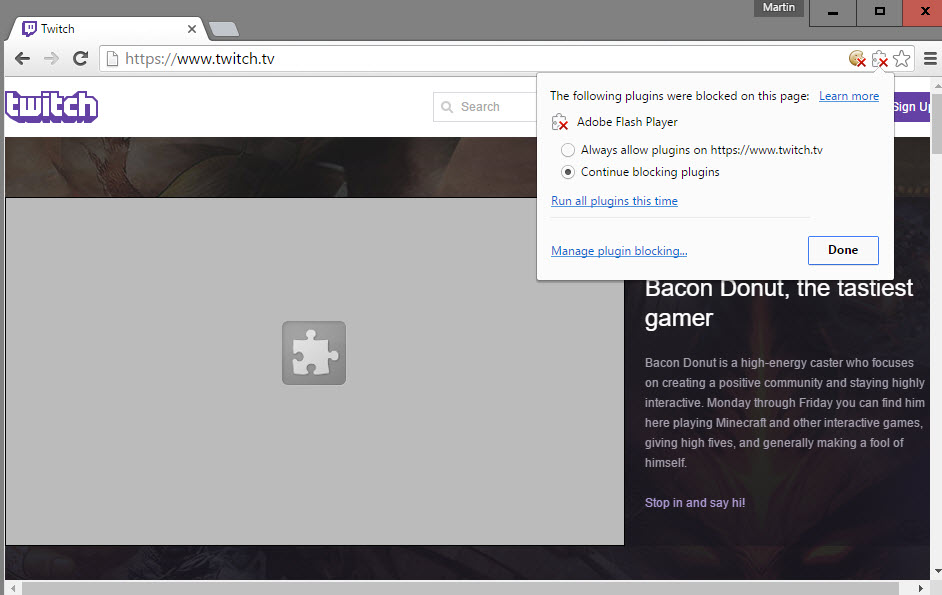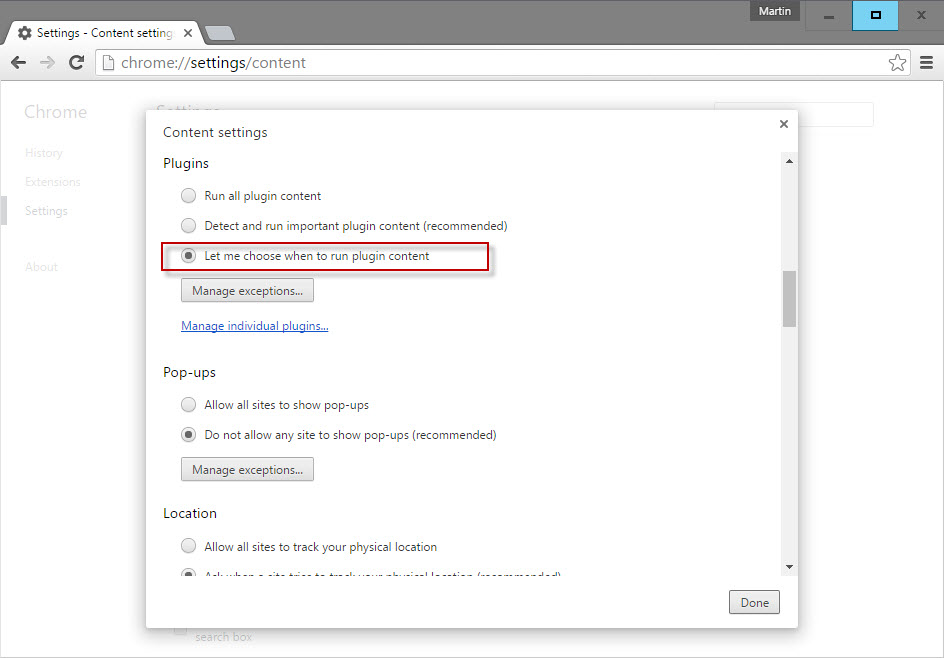Google will set Flash to Click-To-Play in Chrome this year
Google announced last week that it plans to change the default state of the integrated Flash plugin of the Google Chrome browser to click-to-play.
The company plans to set Flash to click-to-play in the fourth quarter of 2016 in the Chrome browser, and to use a whitelist for high profile Flash sites for one year to improve the user experience on these sites.
The effect of the change is that Flash content won't load automatically anymore in Chrome for non-whitelisted sites, and that websites who rely on Flash won't even see that the browser supports the technology until the user allows Flash content to run on it.
Users get notifications in the browser that a site tried to load Flash content which allow them to enable the Flash plugin on a site by site basis.

Google plans to ship Google Chrome with a whitelist of sites that are allowed to run Flash content right away.
These sites are the top ten sites that make use of Flash according to metrics that Google gathered from browser usage.
Sites that will be whitelisted: YouTube, Facebook, Yahoo, VK, Live, Yandex, OK.ru, Twitch, Amazon, Mail.ru.
It will be interesting to see how Google plans to tackle the Flash issue on its own domains. While YouTube will be whitelisted in Chrome so that Flash runs automatically on the site, other Google properties such as Google Music rely on Flash as well currently.
The following happens in regards to Flash when a user visits a site:
- Chrome will default to HTML5 if possible.
- If a whitelisted site requests Flash content to be loaded, it is loaded.
- If a non-whitelisted site requests the same, it is blocked, and the user is informed about it by a prompt in the browser.
- The user can then allow the plugin for the session, or add the site to the whitelist so that it is allowed to run Flash on future visits without prompts.
Google plans to intercept redirects to Flash's download page on the Adobe website. Some sites redirect users when they detect that Flash is not available in the web browser.
Enterprise users will get a policy setting under Content Settings that allows them to enable "always run Flash content" which runs Flash on all sites that are not blocked automatically.
Chrome users can set all plugins currently supported by the browser to click-to-play already by loading chrome://settings/content in the browser's address bar and selecting let me choose when to run plugin content under plugins on the page.

Flash is dying, at least in its current form as a browser plugin. While the majority of browsers support Flash as a user-installed plugin or an integrated plugin, it is clear that this is going to change in the future.
A percentage of sites moved to HTML5 exclusively already, others are defaulting to HTML5 but use Flash as a backup in case technologies used are not supported by the browser, and a third kind of sites have not yet moved to HTML5 at all and require Flash for access.
Many gaming sites, Armorgames or Kongegrate, fall into the third category of sites that require Flash.
Google is not the only browser maker that plans to retire Flash. Mozilla announced last year that it plans to remove NPAPI support from Firefox, and while details in regards to Flash are a bit sketchy right now, it will lead to the end of Flash in the Firefox browser eventually.
Now You: do sites that you visit regularly still rely on Flash?
This article was first seen on ComTek's "TekBits" Technology News

- Log in to post comments